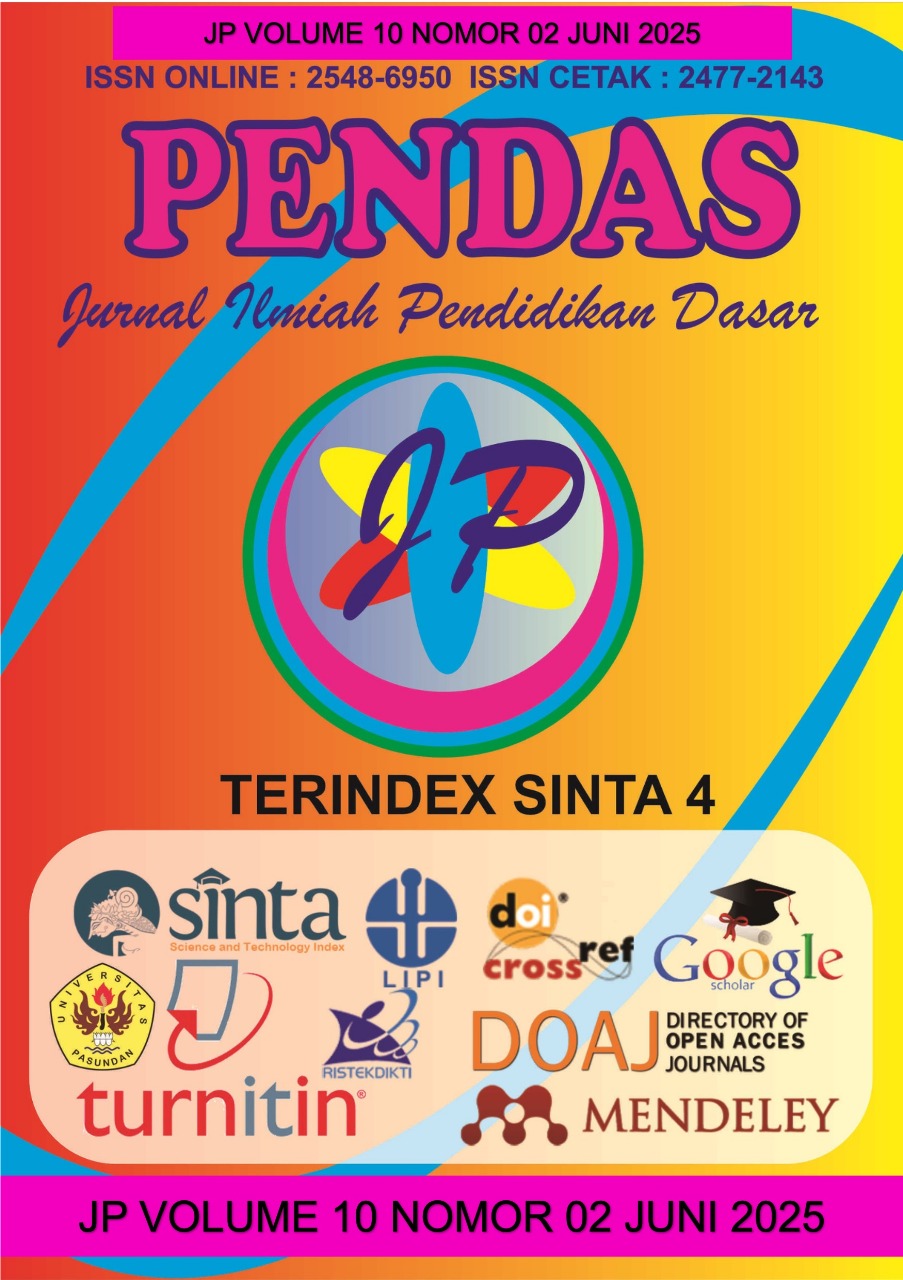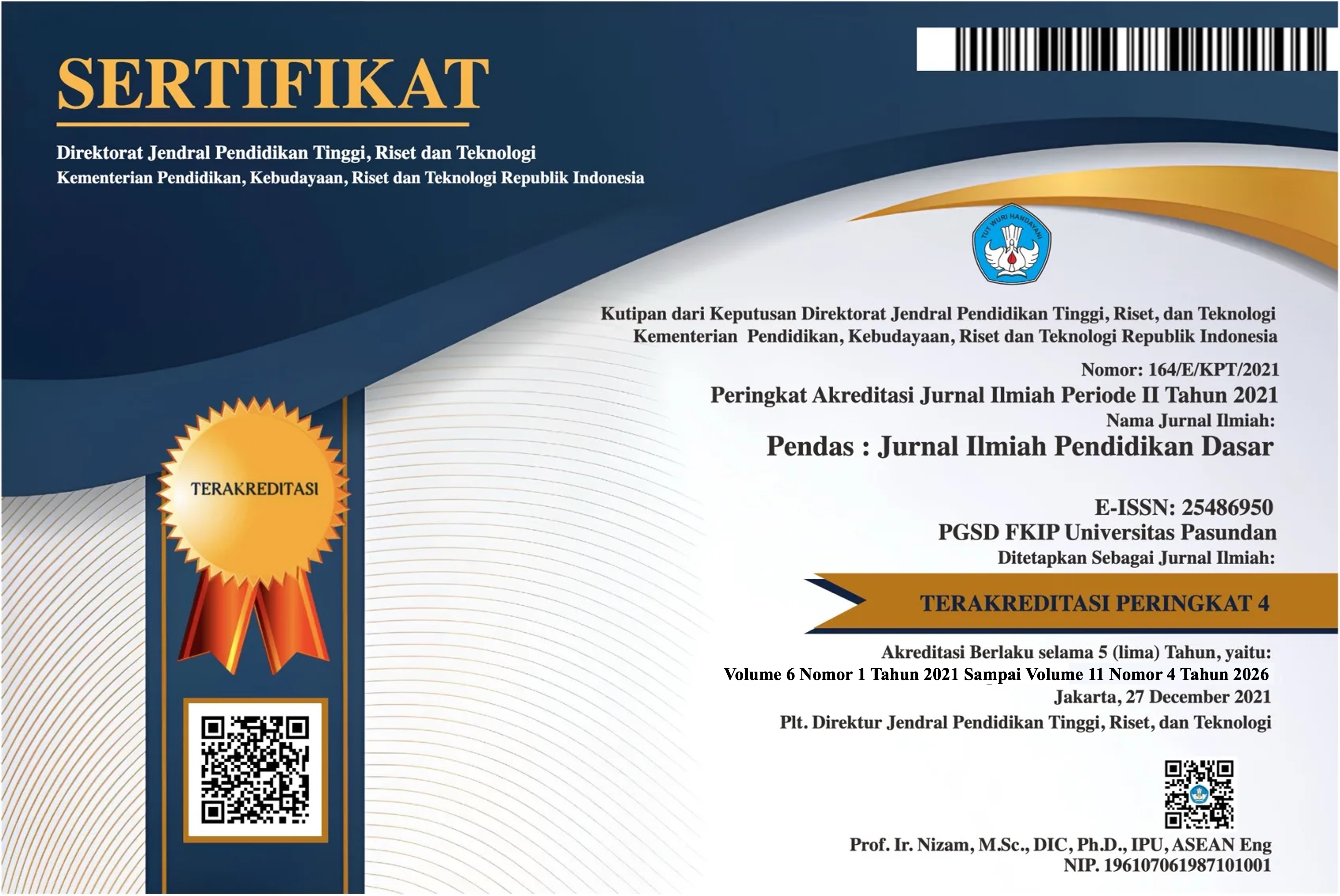HUBUNGAN ANTARA INDEKS MASSA TUBUH DAN DAYA TAHAN KARDIORESPIRASI PADA ANAK STUNTING USIA SEKOLAH DASAR
DOI:
https://doi.org/10.23969/jp.v10i2.27551Keywords:
elementary school children, cardiorespiratory endurance, body mass index, stuntingAbstract
Stunting is a chronic nutritional problem that can affect children's physical development, including body composition and cardiorespiratory capacity. This study aims to analyze the relationship between body mass index (BMI) and cardiorespiratory endurance in stunted children of elementary school age. A cross-sectional study was conducted on 120 stunted children aged 6-12 years in three elementary schools. Anthropometric measurements included height, weight, and BMI calculation. Cardiorespiratory endurance was measured using a 6-minute walk test. Data were analyzed using Pearson correlation and linear regression. The average BMI of the subjects was 15.2 ± 2.1 kg/m², with 65% being categorized as underweight. The average distance covered in the 6-minute test was 420 ± 68 meters. There was a moderate positive correlation (r = 0.42; p < 0.001) between BMI and cardiorespiratory endurance.There is a significant positive relationship between BMI and cardiorespiratory endurance in stunted children, indicating the importance of nutritional interventions to improve children's physical capacity.
Downloads
References
World Health Organization. WHO Child Growth Standards: Length/height-for-age, weight-for-age, weight-for-length, weight-for-height and body mass index-for-age. Geneva: WHO Press; 2006.
Kementerian Kesehatan RI. Survei Status Gizi Indonesia (SSGI) 2022. Jakarta: Kemenkes RI; 2022.
Benefice E, Malina RM. Body size, body composition and motor performances of mild-to-moderately undernourished Senegalese children. Ann Hum Biol. 1996;23(4):307-321.
Beunen G, Baxter-Jones AD, Mirwald RL, et al. Intraindividual allometric development of aerobic power in 8- to 16-year-old boys. Med Sci Sports Exerc. 2002;34(3):503-510.
Geiger R, Strasak A, Treml B, et al. Six-minute walk test in children and adolescents. J Pediatr. 2007;150(4):395-399.
Morinder G, Mattsson E, Sollander C, Marcus C, Larsson UE. Six-minute walk test in obese children and adolescents: reproducibility and validity. Physiother Res Int. 2009;14(2):91-104.
Tomkinson GR, Olds TS. Secular changes in pediatric aerobic fitness test performance: the global picture. Med Sport Sci. 2007;50:46-66.
Benefice E, Cames C. Physical activity patterns of rural Senegalese adolescents. Med Sci Sports Exerc. 1999;31(6):808-814.
Victora CG, Adair L, Fall C, et al.
Maternal and child undernutrition: consequences for adult health and human capital. Lancet. 2008;371(9609):340-357.
Ortega FB, Ruiz JR, Castillo MJ, Sjöström M. Physical fitness in childhood and adolescence: a powerful marker of health. Int J Obes. 2008;32(1):1-11.
Downloads
Published
Issue
Section
License
Copyright (c) 2025 Pendas : Jurnal Ilmiah Pendidikan Dasar

This work is licensed under a Creative Commons Attribution 4.0 International License.



















